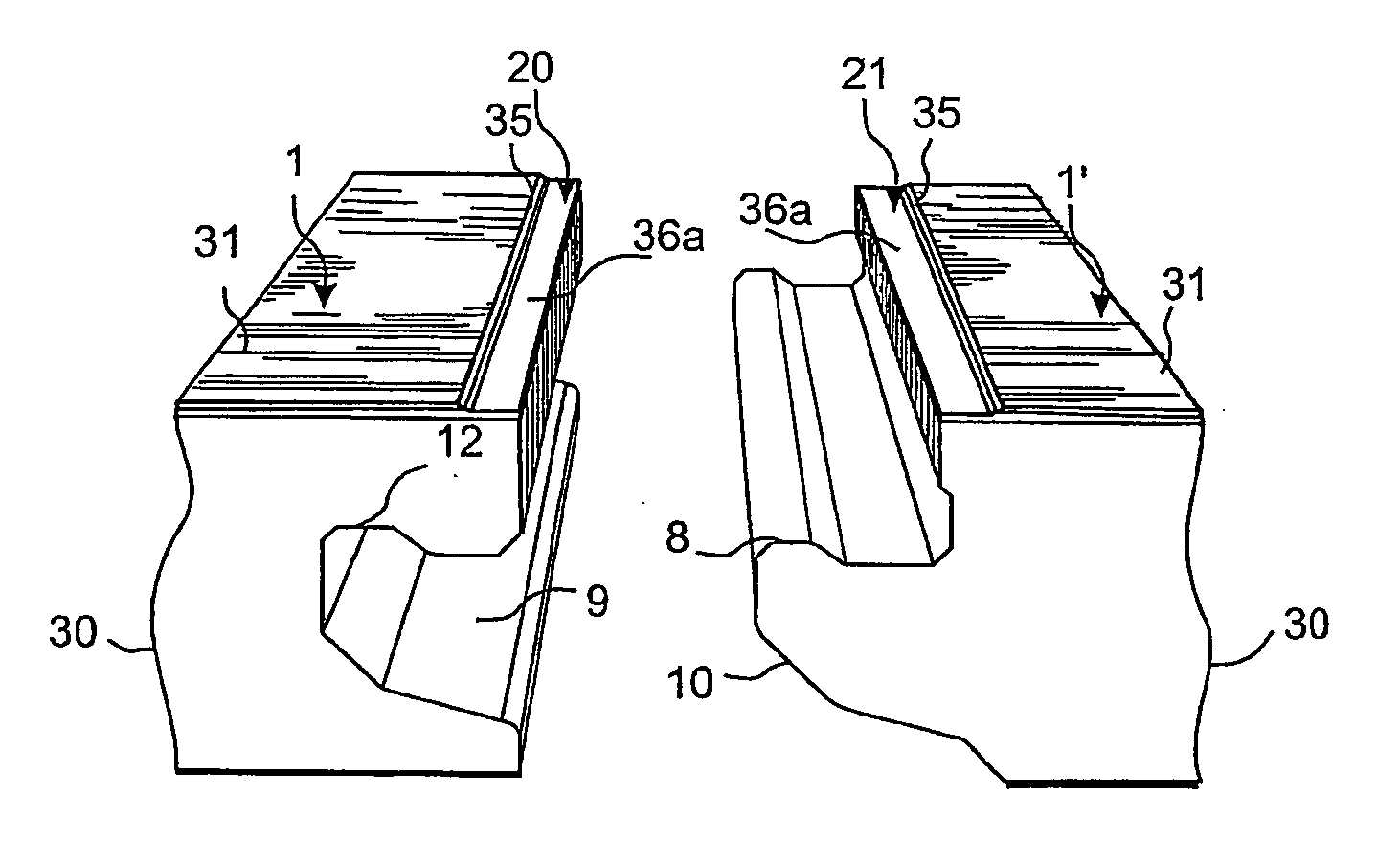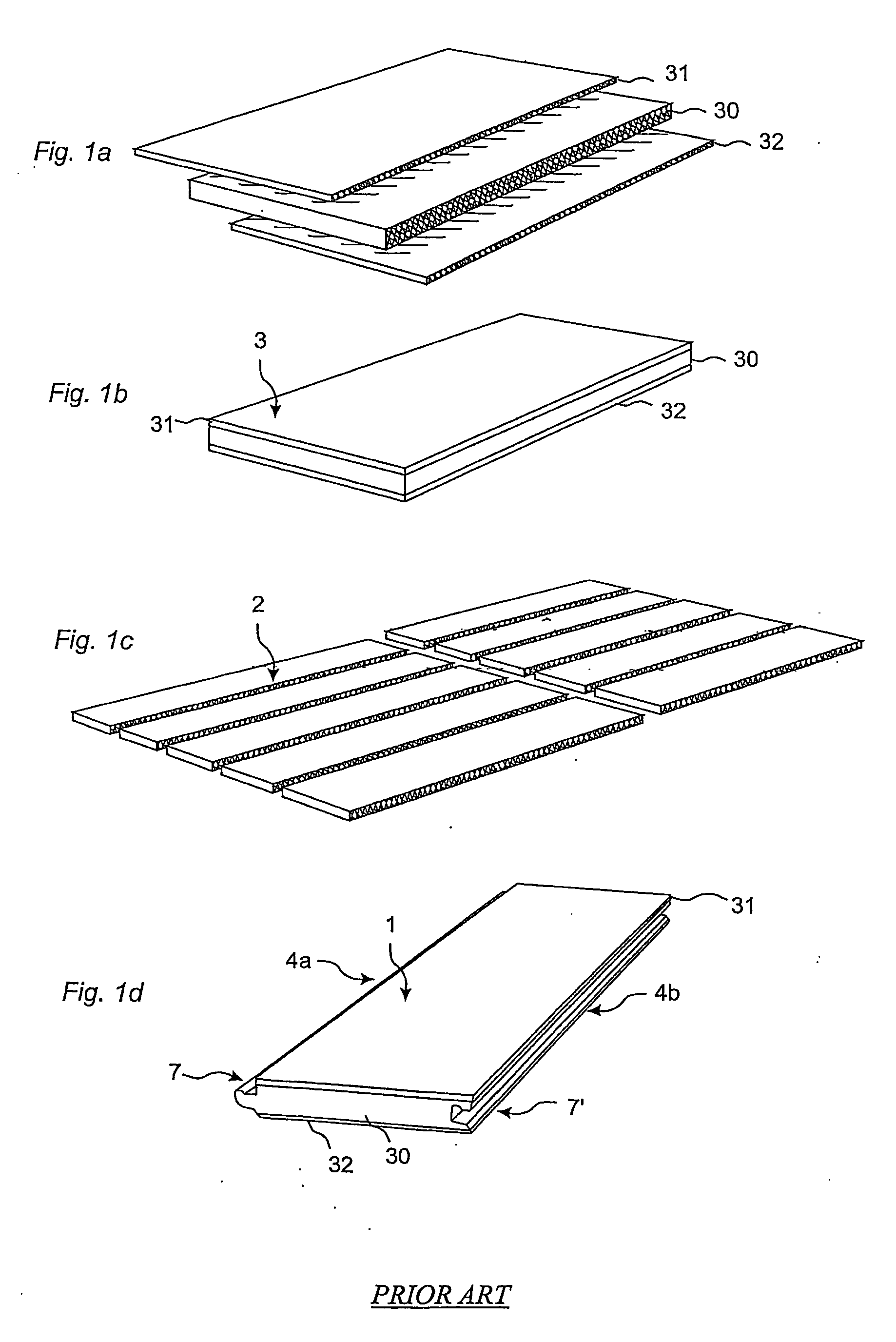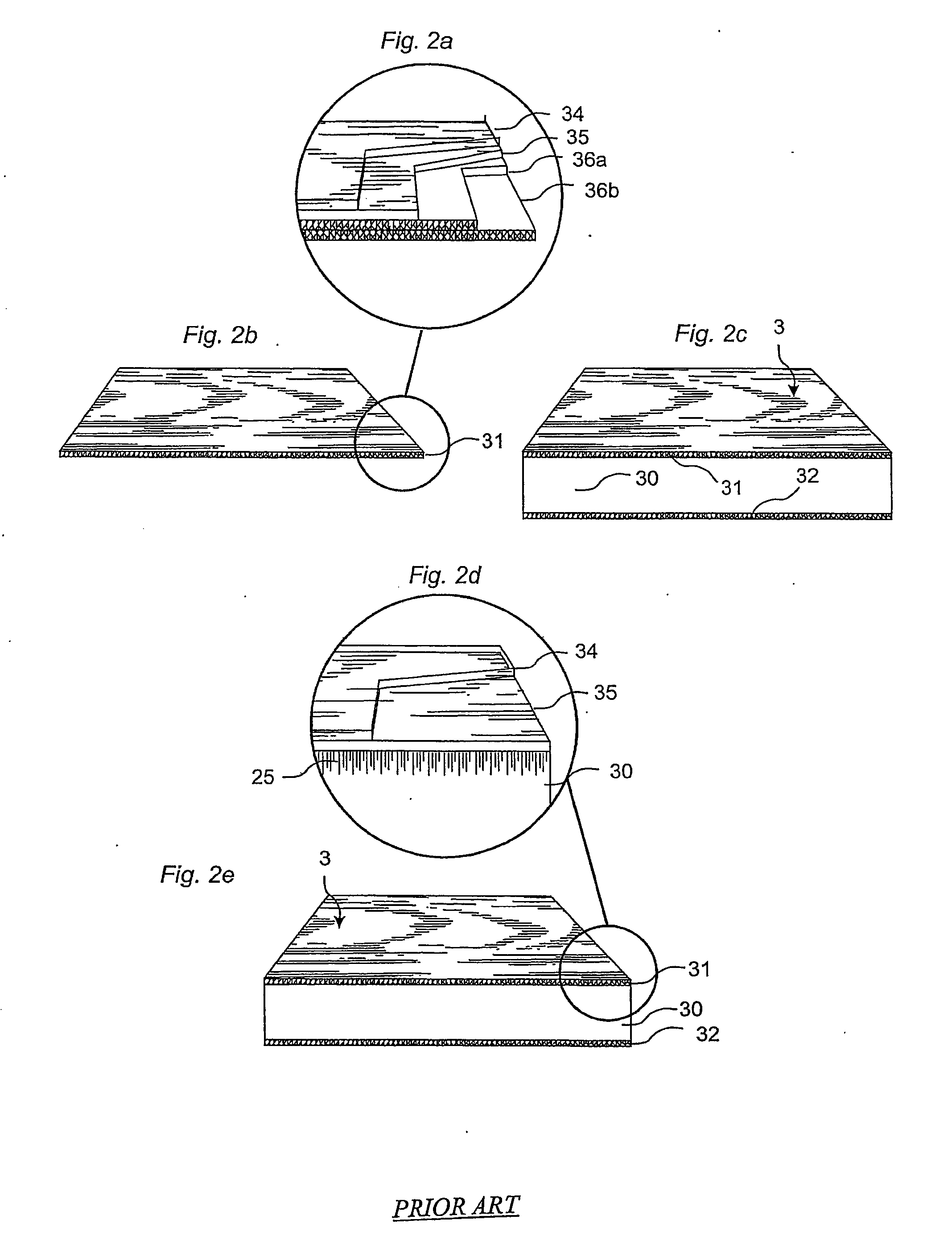Floorboards with decorative grooves
a technology of decorative grooves and floorboards, applied in the field of decorative grooves for floorboards, can solve the problems of negative influence of quality properties of decorative joint portions, high quality core materials, and non-decorative purposes, and achieve the effects of high precision, good moisture resistance and wear resistance, and high precision
- Summary
- Abstract
- Description
- Claims
- Application Information
AI Technical Summary
Benefits of technology
Problems solved by technology
Method used
Image
Examples
Embodiment Construction
[0060]FIGS. 1a-d show in four steps manufacture of a floorboard. FIG. 1a shows the three basic components surface layer 31, core 30 and balancing layer 32. FIG. 1b shows a floor element 3, where surface layer and balancing layer have been applied to the core. FIG. 1c shows how floor panels 2 are made by dividing the floor element. FIG. 1d shows how the floor panel 2 after machining of its edges obtains its final shape and becomes a completed floorboard 1 with a joint system 7, 7′, which in this case is mechanical, on the long sides 4a, 4b.
[0061]FIG. 2a shows manufacture of high pressure laminate. A wear layer 34 of a transparent material with great wearing strength is impregnated with melamine with aluminium oxide added. A decorative layer 35 of paper impregnated with melamine is placed under this layer 34. One or more reinforcing layers 36a, 36b of core paper impregnated with phenol are placed under the decorative layer 35 and the entire packet is placed in a press where it cures ...
PUM
| Property | Measurement | Unit |
|---|---|---|
| thick | aaaaa | aaaaa |
| Thick | aaaaa | aaaaa |
| angle | aaaaa | aaaaa |
Abstract
Description
Claims
Application Information
 Login to View More
Login to View More - R&D
- Intellectual Property
- Life Sciences
- Materials
- Tech Scout
- Unparalleled Data Quality
- Higher Quality Content
- 60% Fewer Hallucinations
Browse by: Latest US Patents, China's latest patents, Technical Efficacy Thesaurus, Application Domain, Technology Topic, Popular Technical Reports.
© 2025 PatSnap. All rights reserved.Legal|Privacy policy|Modern Slavery Act Transparency Statement|Sitemap|About US| Contact US: help@patsnap.com



